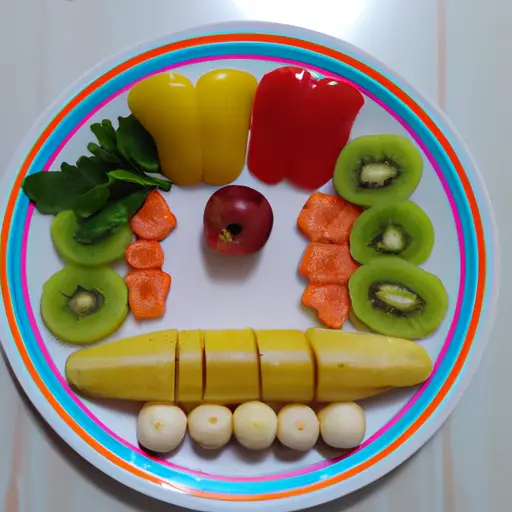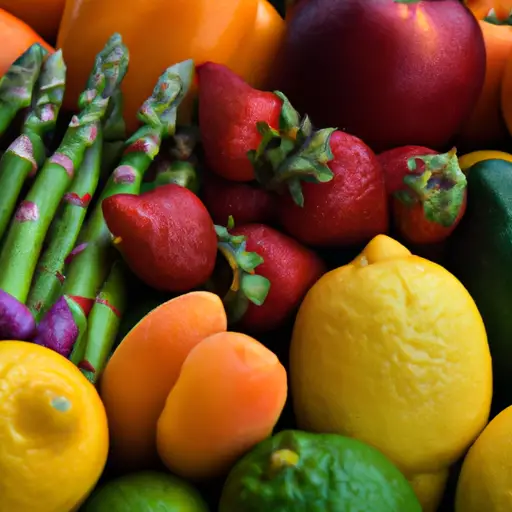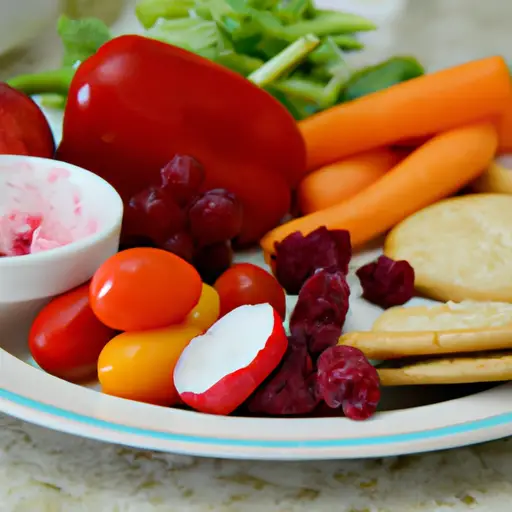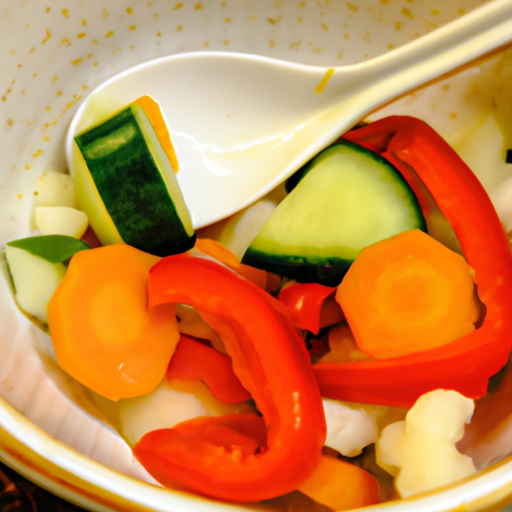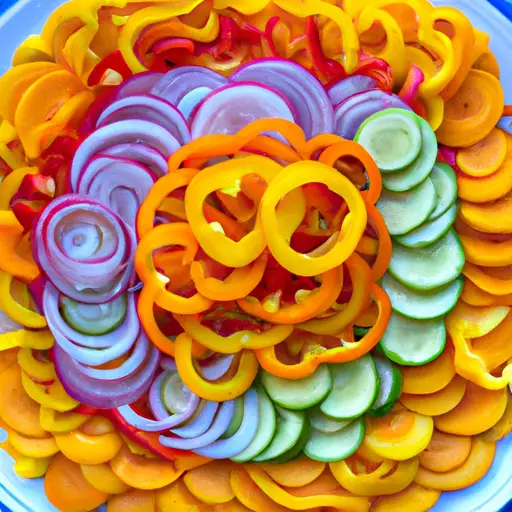Making Healthy Eating Easier with the Plate Method
Well Howdy, Y’all! Let’s Talk About the Plate Method, Shall We?
Ever heard of the Plate Method for healthy eating? If not, don’t you fret! It’s a straightforward and effective way to ensure you’re getting all the nutrients you need without going overboard on portions or cutting out any food groups. Essentially, you divide your plate into specific sections and fill each section with a balanced serving of different food groups. Intrigued yet?
Let me tell ya, using the Plate Method has been a game changer for me personally. It’s helped me maintain a healthy weight, increase my energy levels, and even control my blood sugar. And don’t worry, it’s not just for people with diabetes or other health concerns – anyone can benefit from this eating strategy.
In this blog, I’m gonna walk you through the ins and outs of the Plate Method and share some tips to make it work for you. Yeehaw! Let’s get started!
Step-By-Step Guide to the Plate Method
Alright, folks, let’s dive into the nitty-gritty of using the Plate Method for meal planning. It may seem daunting at first, but I promise it’s easier than it looks. Here’s a step-by-step guide to get you started.
Step 1: Choose a Plate
First thing’s first, you need a plate. Make sure it’s a regular-sized plate – not a massive platter or tiny saucer. I like to use a smaller plate so it looks fuller, and I don’t overeat.
Step 2: Allocate Your Plate Into Sections

Step 3: Fill Each Section With Foods
This is where the fun begins – time to fill each section with nutritious foods. Here’s a guide on how to portion out your food groups:
Recommended Portion Sizes for Different Food Groups
– Grains and Starches: Fill one section with starchy foods like rice, pasta, or bread. Aim for a fist-sized portion. – Fruits and Vegetables: Fill another section with a variety of colorful fruits and veggies. Aim for half of your plate to be fruits and veggies. – Protein Sources: Fill another section with a protein source like meat, fish, beans, or tofu. Aim for a palm-sized portion. – Dairy Products: If you’re including dairy, fill the last section with low-fat or non-fat dairy products like milk, yogurt, or cheese. Aim for a cup-sized portion.
Tips for Making the Plate Method Work for You
Congratulations, you’ve successfully allocated and portioned out your plate! Here are a few tips for making the Plate Method work for you: – Stick to the Recommended Portion Sizes: It’s easy to go overboard with one food group and forget about the others. Stick to the recommended portion sizes to ensure a balanced meal. – Balance Your Plate With Nutrient-Dense Foods: Choose foods that are high in nutrients and low in calories. This will keep you feeling full and satisfied. – Get Creative With Meal Prep and Variety: Mix and match different food groups and get creative with your cooking. Don’t be afraid to try new recipes or flavor combinations. And that’s it, folks! A simple guide to using the Plate Method for healthy meal planning. Give it a try and let me know how it works for you.
Plate Method Guide: Recommended Portion Sizes for Different Food Groups
When it comes to eating healthily, knowing the right portion sizes for each food group can be challenging. This is where the Plate Method comes in handy. By allocating sections on your plate, you can easily achieve a balanced meal that meets your nutritional needs. In this section, we will discuss the recommended portion sizes for different food groups.
Grains and Starches
Grains and starches are an essential part of a healthy diet. When using the Plate Method, it’s recommended that half of your plate should consist of grains and starches. This can include rice, bread, pasta, potatoes, and oats. A serving size of 1/2 cup or one slice of bread is ideal to ensure you receive the right amount of energy and nutrients without exceeding your calorie intake.
Fruits and Vegetables
Fruits and vegetables are packed with vitamins, minerals, fiber, and antioxidants. Therefore, aim to fill half of your plate with a variety of colorful fruits and vegetables. Recommended portion sizes include 1 cup for leafy greens, 1 medium fruit, 1/2 cup for chopped fruits and vegetables, and 1/4 cup for dried fruits.
Protein Sources
Protein is vital for building and repairing body tissues, increasing metabolism, and supporting the immune system. The Plate Method recommends allocating a quarter of your plate for lean protein, such as chicken, fish, beef, tofu, or legumes. A serving size is typically 3 ounces or the size of your palm.
Dairy Products
Dairy products are a great source of calcium and vitamin D. When using the Plate Method, allocate a small section of your plate for dairy products, such as milk, yogurt, or cheese. A serving size of dairy is typically 1 cup or one slice of cheese, depending on the type.
By following the recommended portion sizes for each food group, you can ensure that you consume all the necessary nutrients while keeping your calorie intake in check. Remember, everyone’s nutritional needs are different, so consult with a registered dietitian or healthcare professional for personalized advice.
4. Tips for Making the Plate Method Work for You!
As someone who has tried the Plate Method, I can tell you that it can be challenging to stick to the recommended portion sizes and stay on track with a balanced plate. Here are some tips that have worked for me:
Stick to the Recommended Portion Sizes
It can be tempting to fill up on the tasty stuff like grains and starches, but remember that portion sizes matter. By sticking to the recommended portion sizes for each food group, you can ensure that you are getting the right balance of nutrients and not overeating.
Balance Your Plate With Nutrient-Dense Foods
When filling each section of your plate, it’s important to choose foods that are nutrient-dense. This means that they contain a high amount of vitamins and minerals in relation to their calorie content. Examples of nutrient-dense foods include leafy greens, fruits, whole grains, and lean proteins.
Get Creative With Meal Prep and Variety
The Plate Method can become monotonous if you eat the same foods every day. Get creative with your meal prep and try new recipes to keep things interesting. You can also switch up the types of grains, meats, and vegetables you use to keep things fresh and exciting.
Final Thoughts
While it may take some time to perfect your use of the Plate Method, it’s worth it in the long run. By following the recommended portion sizes and choosing nutrient-dense foods, you can improve your overall health and maintain a balanced diet.
Conclusion: So, that’s the Plate Method in a nutshell!
Well folks, we’ve gone through the Plate Method and its benefits, and now you have the tools you need to make it work for you! Remember, the Plate Method is a guide, not a hard and fast rule. Use it as a starting point and adjust as needed to fit your individual dietary needs.
One thing to keep in mind is portion sizes. It can be tempting to load up on the foods we love, but sticking to recommended portion sizes is key to maintaining a healthy diet. Don’t worry though, you can still enjoy your favorite foods in moderation!
Another important part of the Plate Method is to balance your plate with nutrient-dense foods. While treats and indulgences are okay in moderation, make sure the majority of your plate is filled with foods that will nourish your body.
Finally, get creative with meal prep and variety! No one wants to eat the same thing every day. Experiment with new recipes and flavor combinations to keep things interesting.
So, there you have it! The Plate Method is a simple and effective way to manage portion sizes and ensure a balanced diet. If you want to dig deeper into the importance of portion control, check out this article for more expert advice.
